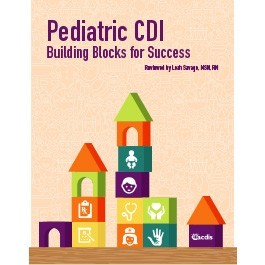Book excerpt: Pediatric GI concerns

Blocks for Success
As with adult gastroenterological (GI) conditions, pediatric patients can experience a wide range of severity levels. One concern with pediatric patients, however, is simply their immature anatomy and physiology. Since children are still developing, GI conditions can rapidly degenerate into much more severe conditions more quickly than in adults. Additionally, pediatric patients may have corrective procedures for congenital conditions which need to be documented with care.
CDI professionals need to understand the common terminology, treatments, and etiologies of pediatric GI conditions to determine the most appropriate code, accurate reimbursement, and ensure that correct quality data is reported.
Let’s consider GI bleeding in pediatric patients.
GI bleeds in children may be caused by gastric and duodenal ulcers, esophagitis, gastritis, juvenile polyps, irritable bowel disease, and esophageal varices. Hematemesis (upper GI), melena (upper/ lower GI—black and tarry-like stools), hematochezia (lower GI—bright red blood from the rectum), or fecal occult blood are all forms of this condition.
Upper GI bleeding in neonates could be due to swallowed maternal blood during feedings or, more commonly, milk protein allergies. Both neonates and infants are also more likely to have hematochezia with an upper GI bleed. For children who are 12 months and older, the most common causes of lower GI bleeding are infectious gastroenteritis and anal fissures.
Endoscopies should only be done for acute severe hemorrhages or persistent hemorrhages. Documentation should include the source of bleed or likely source of bleed. If the GI bleed includes complications, such as orthostatic hypotension, shock, syncope or tachycardia, the complications should also be coded when they require additional therapeutic treatment or diagnostic studies.
When a child is admitted for a GI bleed with known etiology, the principal diagnosis depends on the focus of the admission. If the focus of treatment is on controlling the bleed, the GI bleed is coded as the principal diagnosis. If the focus of treatment is on the etiology of the GI bleed, the etiology is listed as the principal diagnosis and the GI bleed is listed as the secondary diagnosis.
If a combination code for the GI bleed and etiology exists, there’s no need to include the code for the GI bleed.
Editor’s note: This article is an excerpt from the book Pediatric CDI: Building Blocks for Success.
